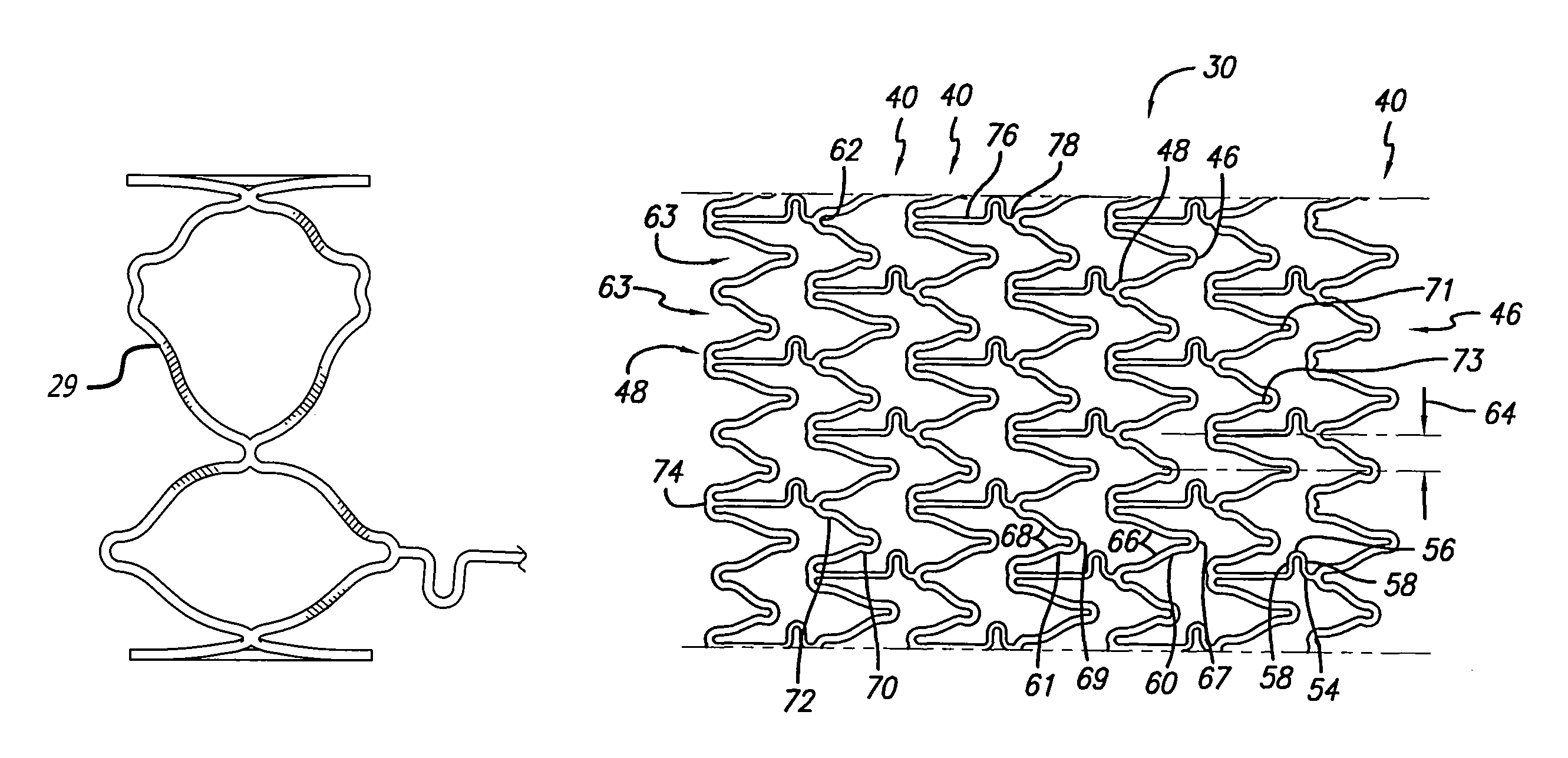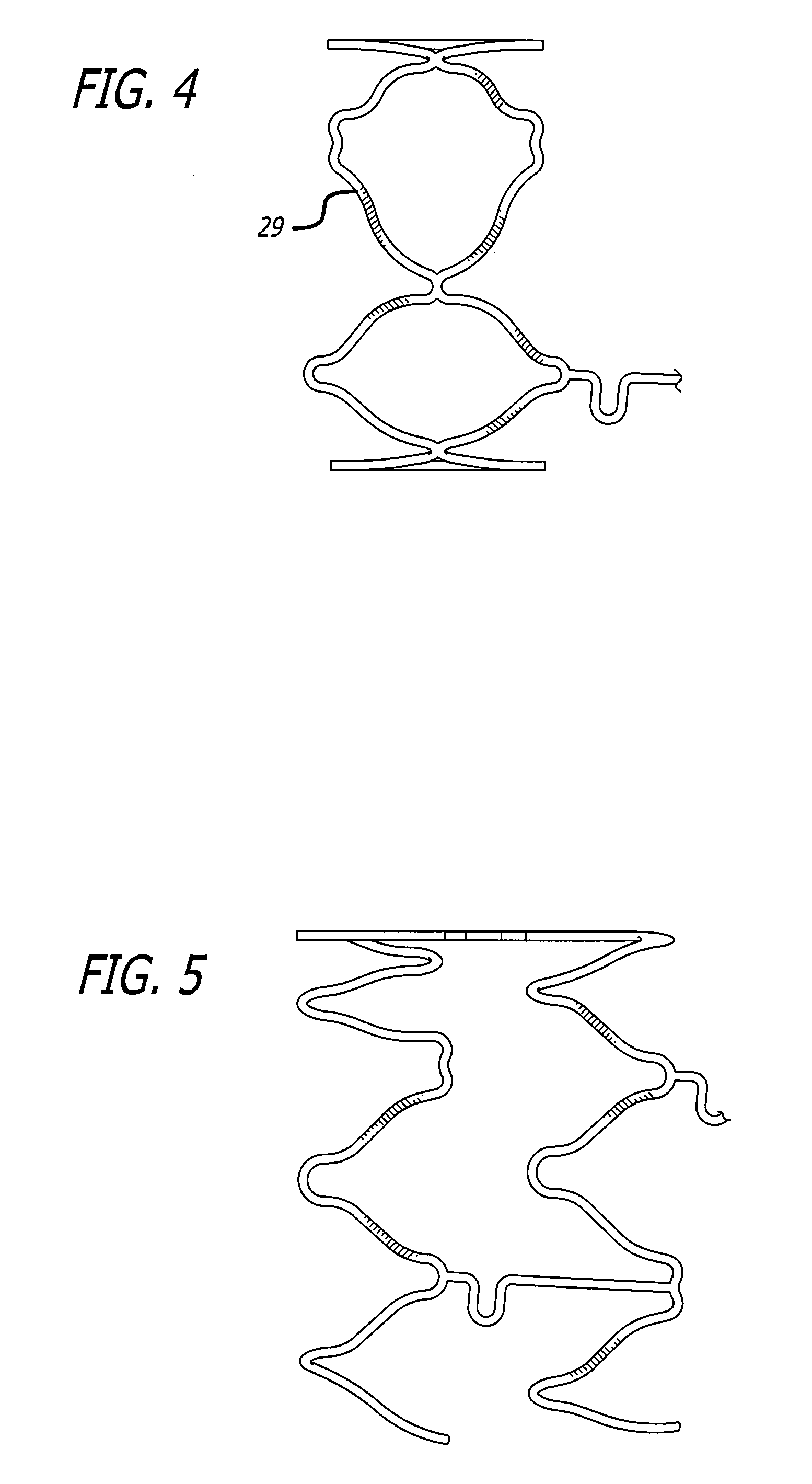Intravascular stent with inverted end rings
a stent and end-ring technology, applied in the field of vascular repair devices, to achieve the effect of reducing the stent-to-shoulder distance, maintaining a pristine stent deployment, and being highly flexibl
- Summary
- Abstract
- Description
- Claims
- Application Information
AI Technical Summary
Benefits of technology
Problems solved by technology
Method used
Image
Examples
Embodiment Construction
The present invention stent improves on existing stents by providing a longitudinally flexible stent having a plurality of inverted cylindrical end rings coupled at least in part to a plurality of adjacent cylindrical rings that can be in the form of mirror images of one another such that a symmetrical configuration is present on at least one of a proximal end and a distal end of the stent. In addition to providing longitudinal flexibility, the stent of the present invention also provides radial rigidity and a high degree of scaffolding of a vessel wall, such as a coronary artery. Further, the inverted end ring configuration of the present invention stent aims at reducing the stent-to-shoulder distance as well as delivering therapeutic drugs to the peri-stent area while maintaining a pristine stent deployment.
Before describing in detail an exemplary embodiment of a stent in accordance with the present invention, it is instructive to briefly describe a typical stent implantation proc...
PUM
 Login to view more
Login to view more Abstract
Description
Claims
Application Information
 Login to view more
Login to view more - R&D Engineer
- R&D Manager
- IP Professional
- Industry Leading Data Capabilities
- Powerful AI technology
- Patent DNA Extraction
Browse by: Latest US Patents, China's latest patents, Technical Efficacy Thesaurus, Application Domain, Technology Topic.
© 2024 PatSnap. All rights reserved.Legal|Privacy policy|Modern Slavery Act Transparency Statement|Sitemap



